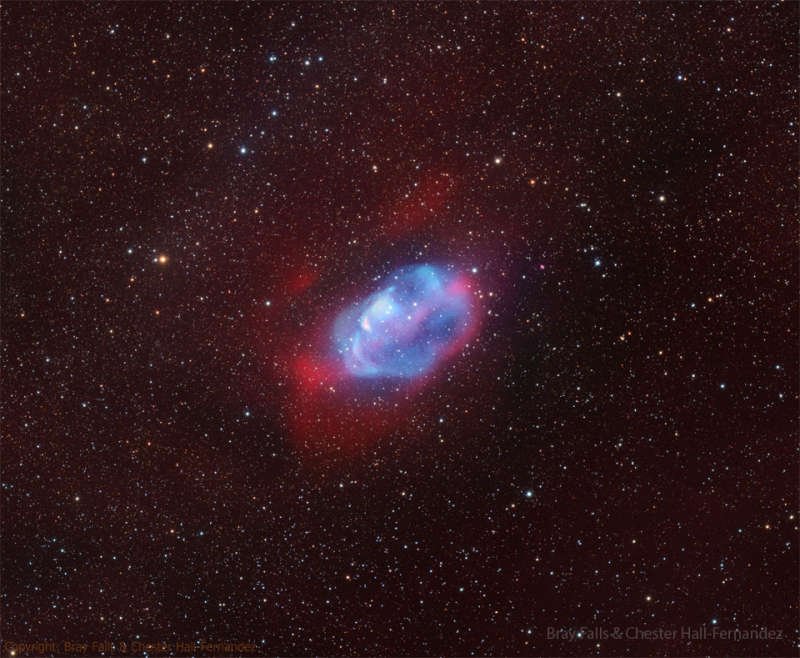Credit & Copyright: Bray Falls &
Chester Hall-Fernandez
Explanation:
This nebula had never been noted before.
Newly discovered nebulas are usually angularly small
and found by professionals using large telescopes.
In contrast, the
Pistachio Nebula was
discovered by dedicated amateurs
and, although faint, is nearly the size of the full Moon.
In modern times, amateurs with even small telescopes
can create long exposures over sky areas much larger than most professional telescopes
can see.
They can therefore discover both
previously unknown areas of
extended emission around known objects,
as well as
entirely unknown objects, like nebulas.
The pictured Pistachio Nebula is shown in
oxygen emission (blue) and
hydrogen emission (red).
The nature of the hot central star is currently unknown,
and the nebula might be labeled a
planetary nebula
if it turns out to be a
white dwarf star.
The featured image
is a composite of over 70 hours of exposure taken in early June under the dark skies
of
Namibia.
1998 1999 2000 2001 2002 2003 2004 2005 2006 2007 2008 2009 2010 2011 2012 2013 2014 2015 2016 2017 2018 2019 2020 2021 2022 2023 2024 |
Январь Февраль Март Апрель Май Июнь Июль Август Сентябрь Октябрь Ноябрь Декабрь |
NASA Web Site Statements, Warnings, and Disclaimers
NASA Official: Jay Norris. Specific rights apply.
A service of: LHEA at NASA / GSFC
& Michigan Tech. U.
|
Публикации с ключевыми словами:
emission nebula - эмиссионная туманность
Публикации со словами: emission nebula - эмиссионная туманность | |
См. также:
Все публикации на ту же тему >> | |
